Related Research Articles
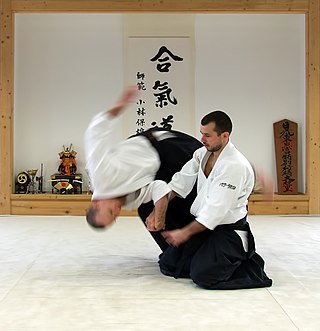
Aikido is a modern Japanese martial art that is split into many different styles, including Iwama Ryu, Iwama Shin Shin Aiki Shuren Kai, Shodokan Aikido, Yoshinkan, Renshinkai, Aikikai and Ki Aikido. Aikido is now practiced in around 140 countries. It was originally developed by Morihei Ueshiba, as a synthesis of his martial studies, philosophy and religious beliefs. Ueshiba's goal was to create an art that practitioners could use to defend themselves while also protecting their attackers from injury. Aikido is often translated as "the way of unifying (with) life energy" or as "the way of harmonious spirit". According to the founder's philosophy, the primary goal in the practice of aikido is to overcome oneself instead of cultivating violence or aggressiveness. Morihei Ueshiba used the phrase masakatsu agatsu katsuhayabi" to refer to this principle.
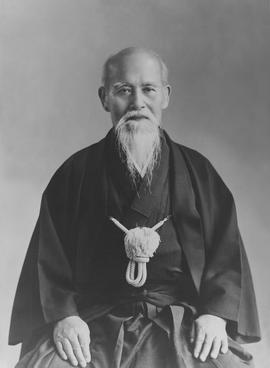
Morihei Ueshiba was a Japanese martial artist and founder of the martial art of aikido. He is often referred to as "the founder" Kaiso (開祖) or Ōsensei (大先生/翁先生), "Great Teacher".

Gendai budō, or Shinbudō are both terms referring to modern Japanese martial arts, which were established after the Meiji Restoration (1866–1869). Kobudō or koryū are the opposite of these terms referring to ancient martial arts established before the Meiji Restoration.

Tenshin Shōden Katori Shintō-ryū (天真正伝香取神道流) is one of the oldest extant Japanese martial arts and an exemplar of bujutsu. It was founded by Iizasa Ienao, who lived near Katori Shrine at the time. The ryū is purported to have been founded in 1447, but some scholars state that it was about 1480.
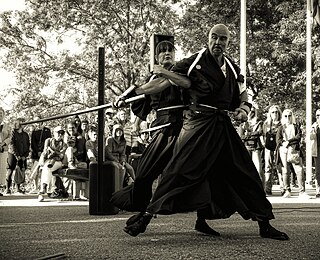
Tantōjutsu (短刀術) is a Japanese term for a variety of traditional Japanese knife fighting systems that used the tantō (短刀), as a knife or dagger. Historically, many women used a version of the tantō, called the kaiken, for self-defense, but warrior women in pre-modern Japan learned one of the tantōjutsu arts to fight in battle.

Japanese martial arts refers to the variety of martial arts native to the country of Japan. At least three Japanese terms are used interchangeably with the English phrase Japanese martial arts.

Donald Frederick "Donn" Draeger was an internationally known teacher and practitioner of Japanese martial arts. He was the author of several important books on Asian martial arts, and was a pioneer of international judo in the United States and Japan. He also helped make the study of martial arts an acceptable topic of academic research.
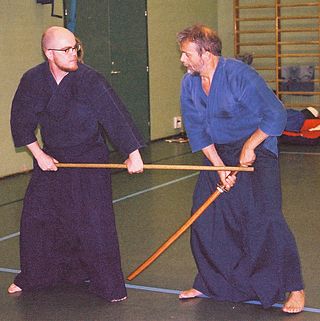
Shintō Musō-ryū, or Shindō Musō-ryū (神道夢想流), most commonly known by its practice of jōdō, is a traditional school (koryū) of the Japanese martial art of jōjutsu, or the art of wielding the short staff (jō). The technical purpose of the art is to learn how to defeat a swordsman in combat using the jō, with an emphasis on proper combative distance, timing and concentration. The system includes teachings of other weapon systems which are contained in Shintō Musō-ryū as auxiliary arts. The school is sometimes abbreviated as SMR.
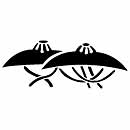
Yagyū Shingan-ryū (柳生心眼流), is a traditional school (koryū) of Japanese martial arts. Different styles of Yagyū Shingan-ryū, such as Heihojutsu and Taijutsu, assert different founders, Takenaga Hayato and Araki Mataemon respectively, but they all go back to Ushū Tatewaki, referred to in some historical scrolls as Shindō Tatewaki, who taught a system based on Sengoku-period battlefield tactics, that was called Shindō-ryū.
Dave Lowry is an American writer best known for his articles, manuals and novels based on Japanese martial arts.
Hinoshita Torite Kaisan Takenouchi-ryū is one of the oldest jujutsu koryū in Japan. It was founded in 1532, the first year of Tenbun, on the twenty-fourth of the sixth lunar month by Takenouchi Chūnagon Daijō Nakatsukasadaiyū Hisamori, the lord of Ichinose Castle in Sakushū. Although it is famous for its jūjutsu, Takenouchi Ryū is actually a complete martial art, including armed grappling, staff (bōjutsu), sword (kenjutsu), sword drawing (iaijutsu), glaive (naginatajutsu), iron fan (tessenjutsu), restraining rope (hojōjutsu), and resuscitation techniques (sakkatsuhō). Its jūjutsu techniques have been influential in the founding of many other schools in Japan. Takenouchi Ryū is still actively transmitted today by members of the Takenouchi family, as well as by other groups both within and outside Japan.

Kashima Shinden Jikishinkage-ryū, often referred to simply as Jikishinkage-ryū or Kashima Shinden, is a traditional school (koryū) of the Japanese martial art of swordsmanship (kenjutsu). The school was founded in the mid-16th century, based upon older styles of swordsmanship, and is one of the few ancient Japanese martial arts schools still existing today.
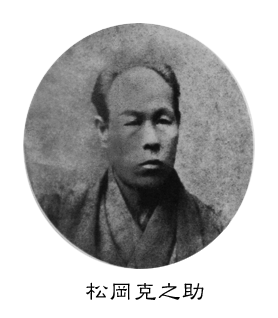
Shindō Yōshin-ryū (新道楊心流), meaning "New Willow School" is a traditional school (ko-ryū) of Japanese martial arts, teaching primarily the art of jūjutsu. The first kanji of the name originally translated into "新=New", but in the mainline branch the kanji for "new" was eventually changed into the homophonic "神=sacred". The name of the school may also be transliterated as Shintō Yōshin-ryū, but the koryu tradition should not be confused with the modern school of Shintōyōshin-ryū which is unconnected.
Kashima Shintō-ryū (鹿島新當流) is a traditional (koryū) school of Japanese martial arts founded by Tsukahara Bokuden in the Muromachi period (c.1530).

The chigiriki (契木) is a Japanese flail weapon. It consists of a solid or hollow wood or iron staff with an iron weight and chain on the end, sometimes retractable. The chigiriki is a more aggressive variation of the parrying weapon kusarigama. It can be used to strike or entangle the opponent as well as to parry his blows and to capture or incapacitate an opponent's weapon.
Shōgen Okabayashi was a well known Kansai based aikijujutsu teacher.
The oldest line of Yōshin-ryū (楊心流) is probably the school founded by Nakamura Sakyōdayū Yoshikuni around 1610, and is often referred to as Yōshin Koryū (楊心古流). Nakamura later changed his name to Miura Yōshin, and this school may also be referred to as Miura-ryū (三浦流), or Miura Yōshin-ryū (三浦楊心流). This line has a historical connection to the Takeda family through the founder's grandfather, Nakamura Yorifusa. Yorifusa was a retainer of the Koshu Takeda who founded a school of jujutsu called Taiyo ryu. Yoshin Koryu was founded by Nakamura Yoshikuni in Nagasaki after being driven from Takeda lands by Tokugawa Ieyasu. It is stated that Yoshin Koryu was a mixture of Taiyo ryu and knowledge gained by Yoshikuni’s exposure to Chinese martial arts and medicine, knowledge gained while living in Nagasaki and in nearby Miura village.

Jujutsu, also known as jiu-jitsu and ju-jitsu, is a family of Japanese martial arts and a system of close combat that can be used in a defensive or offensive manner to kill or subdue one or more weaponless or armed and armored opponents. Jujutsu developed from the warrior class around the 17th century in Japan. It was designed to supplement the swordsmanship of a warrior during combat. A subset of techniques from certain styles of jujutsu were used to develop many modern martial arts and combat sports, such as judo, aikido, sambo, ARB, Brazilian jiu-jitsu, and mixed martial arts. The history of the art during this time is uncertain because teachers kept everything secret to give their art a feeling of importance and then would change the stories of their art to suit their own needs.
Fusen-ryū is a traditional school of jujutsu founded by Motsugai Takeda. It contains an extensive system of martial arts, including unarmed fighting (jujutsu), staff (bōjutsu), short staff (jojutsu), sword (kenjutsu), sword drawing (iaijutsu), glaive (naginatajutsu), scythe (nagikamajutsu), scythe and chain (kusarigamajutsu), and jitte (jittejutsu).
References
- ↑ "Ellis Amdur". Araki Ryu Torite Kogusoku. Retrieved 20 April 2015.
- ↑ Erard, Guillaume. "Interview with Ellis Amdur". Life in Japan and Aikido Practice. Retrieved 21 April 2015.
- ↑ Busek, Amy (1 April 2015). "NAMI asks for education funding". Idaho Mountain Express. Retrieved 21 April 2015.
- ↑ "Author biographies". Koryu.com. Retrieved 21 April 2015.
- ↑ Thomas A. Green; Joseph R. Svinth (11 June 2010). Martial Arts of the World: An Encyclopedia of History and Innovation: An Encyclopedia of History and Innovation. ABC-CLIO. p. 580. ISBN 978-1-59884-244-9.
- ↑ Flosi, Ed. "Book Review - The Thin Blue Lifeline". Policeone.com. Retrieved 21 April 2015.
- ↑ Armitage, Hugh. "Neal Stephenson makes comics debut with Cimarronin". Digital Spy. Retrieved 21 April 2015.